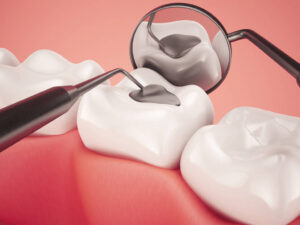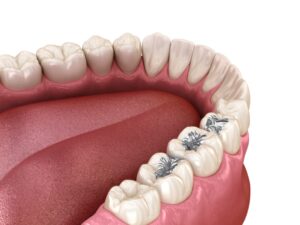Introduction
Maintaining good oral health is crucial for overall well-being, and one of the most effective ways to protect your teeth from decay is through the use of dental sealants. Despite their simplicity, sealants play a significant role in preventive dentistry, offering a barrier against cavities, particularly in children and teenagers. This blog explores what dental sealants are, how they work, and why they are an essential part of oral care.

What are Dental Sealants?
Dental sealants are thin, plastic coatings applied to the chewing surfaces of the back teeth, primarily the molars and premolars. These teeth have deep grooves and fissures that make them particularly susceptible to cavities, as food particles and bacteria can easily get trapped in these hard-to-clean areas. Sealants fill in these grooves, creating a smooth surface that is easier to clean and less likely to harbor harmful bacteria.
How Do Sealants Work?
The process of applying sealants is simple, quick, and painless. Here’s how it works:
- Teeth Cleaning: The dentist or dental hygienist begins by thoroughly cleaning the teeth that will receive the sealants. This step ensures that no food particles or plaque are trapped under the sealant.
- Teeth Preparation: After cleaning, the teeth are dried, and an acidic solution is applied to the chewing surfaces. This solution slightly roughens the tooth surface, allowing the sealant to adhere more effectively.
- Sealant Application: Once the teeth are prepared, the sealant material is painted onto the tooth enamel. It flows into the grooves and fissures, covering the chewing surface.
- Curing the Sealant: A special curing light is used to harden the sealant. Once hardened, the sealant forms a strong bond with the tooth, providing a protective shield against decay.
Who Should Get Dental Sealants?
Sealants are most commonly applied to children and teenagers, as they are at higher risk for cavities in their permanent molars and premolars. However, adults without cavities or fillings in their molars can also benefit from sealants. Sealants are especially recommended for:
- Children and Teenagers: As soon as a child’s first permanent molars come in, usually around age 6, sealants can be applied. This protection can last through the cavity-prone years of ages 6 to 14.
- Adults: Those with deep grooves or fissures in their molars, and no previous decay, can consider sealants as a preventive measure.
Benefits of Dental Sealants
- Cavity Prevention: Sealants provide a protective barrier that keeps food and bacteria from settling into the grooves of your teeth, significantly reducing the risk of decay.
- Long-Lasting Protection: While not permanent, sealants can last for several years with proper care. They can be reapplied as needed to maintain protection.
- Cost-Effective: Applying sealants is a relatively low-cost procedure, especially when compared to the cost of treating cavities and other dental problems they help prevent.
- Painless and Non-Invasive: The application of sealants is quick, easy, and does not require any drilling or removal of tooth structure, making it a comfortable option for patients.
Maintaining Your Sealants
To ensure that your sealants continue to protect your teeth effectively, regular dental check-ups are essential. During these visits, your dentist will check the condition of the sealants and reapply them if necessary. It’s also important to maintain good oral hygiene by brushing twice a day, flossing daily, and eating a balanced diet.

Conclusion
Dental sealants are a simple yet highly effective tool in the fight against tooth decay. By providing a protective shield over your teeth’s vulnerable surfaces, sealants help prevent cavities and maintain oral health. Whether for children or adults, sealants are a valuable addition to any dental care routine. Consult your dentist to see if sealants are right for you or your children, and take a proactive step toward preserving your smile.
